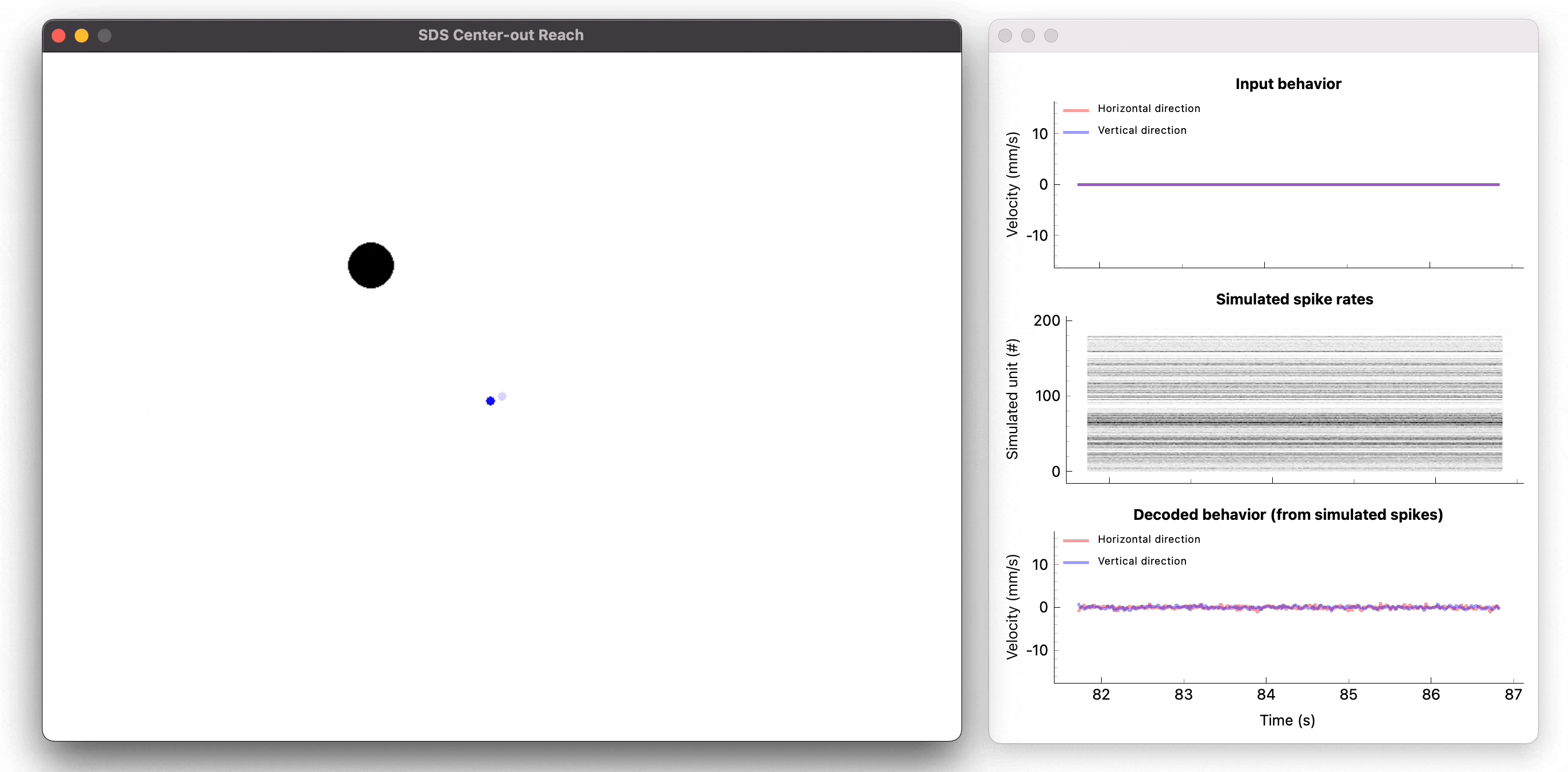Neural Data Simulator
The Neural Data Simulator (NDS) is an open source Python package designed to simplify the development of Brain-Computer Interfaces (BCIs). NDS generates real-time electrophysiology data from behavioral data, such as cursor movement and arm kinematics, to replace the BCI-user in the loop during development. The package is highly flexible and fully customizable, and comes with a set of utilities and examples which allow for the rapid kickstarting of BCI development.
Some of the key benefits of utilizing NDS are:
It offers an affordable and efficient solution for testing a Brain-Computer Interface (BCI) in a closed-loop manner, eliminating the need for costly equipment or an actual BCI user during data collection
The generated data mimics the temporal and frequency content of data from intracortical arrays, facilitating complete BCI pipeline testing
Custom noise can be incorporated into the data to mimic diminishing electrophysiology data quality
Users have the flexibility to introduce disturbances to the behavior and/or neural data, simulating a decline in data quality and change in data content over time
It provides great flexibility, enabling the quick exchange of encoding models to represent different BCI users

The example above showcases NDS and the plugin system in a real-time closed-loop demo of a center-out reaching task. First, we capture the user’s intended mouse movement (top-right figure and gray dot in main window) and use it to generate spiking rates through NDS’s encoder module (using a model trained on real data from non-human primates performing a similar task — check out Train models for the encoder and decoder for more information). From these spiking rates, the NDS ephys generator module simulates electrophysiological data (middle-right figure) in a similar format to that produced by real devices. This simulated neural data is subsequently processed and decoded, then fed back as the actual user movement (bottom-right figure and blue dot in main window), completing the closed loop. The diagram below summarizes the system architecture. For more details see the NDS architecture section.
Try it out yourself by following our quick start guide!
